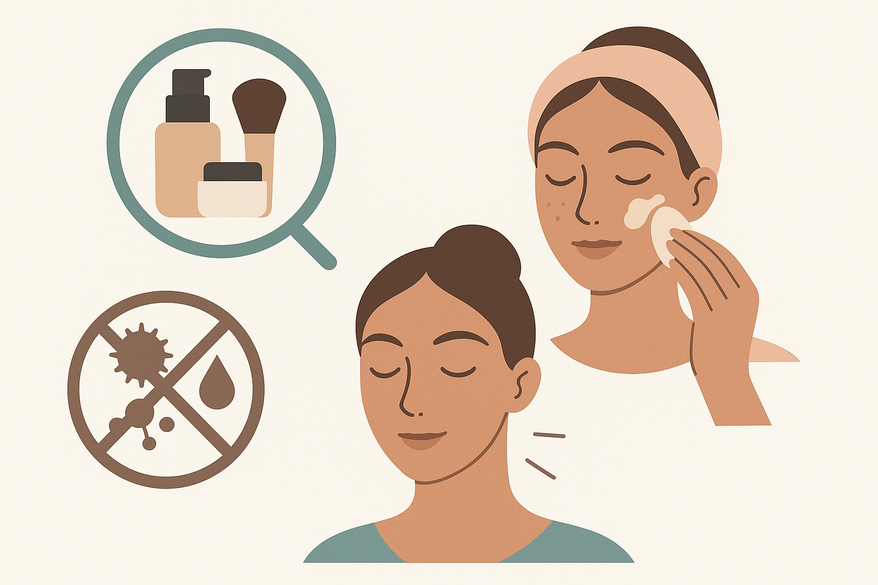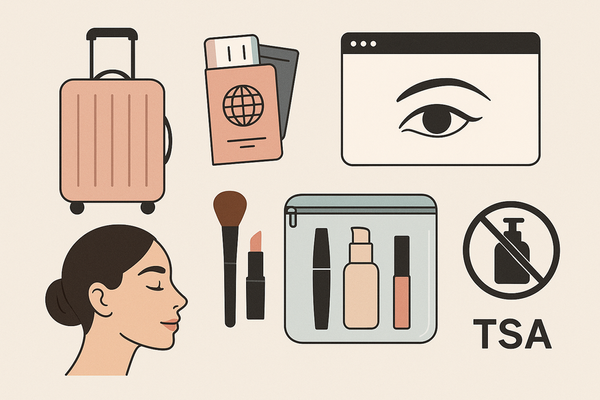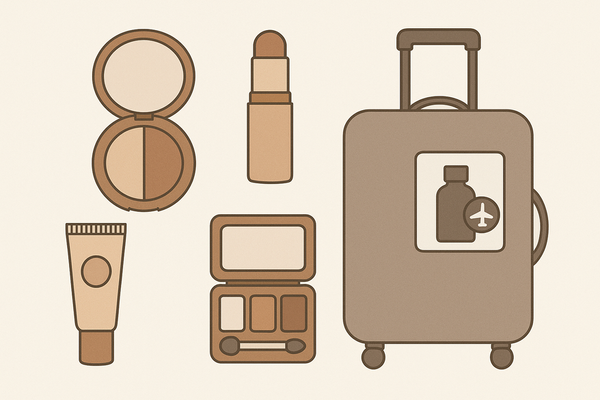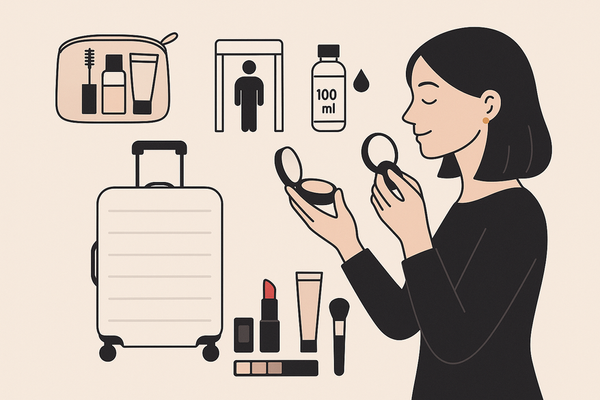Makeup Tips for Sensitive Skin: Safe Solutions for Acne-Prone Complexions
Discover essential makeup tips for sensitive skin, including how to choose products, avoid triggers, and maintain clear, irritation-free complexion.

Estimated reading time: 7 minutes
Key Takeaways
- Identifying common triggers to avoid flare-ups
- Choosing hypoallergenic, non-comedogenic formulas
- Step-by-step preparation, application, and removal routines
- Essential ingredients to seek and avoid
- Expert advice, testimonials, and troubleshooting tips
Table of Contents
- Introduction
- What Is Sensitive Skin?
- Common Sensitive Skin Triggers
- Essential Makeup Tips for Sensitive Skin
- Safe Makeup Application for Sensitive Skin
- Product Recommendations for Sensitive Skin Makeup
- Expert Makeup Tips & Testimonials
- Conclusion: Safe Makeup Solutions for Sensitive Skin
Introduction
Sensitive skin often reacts with redness, burning, or itching, making makeup a delicate dance for acne-prone complexions. This guide will walk you through safely choosing, applying, and removing products—so you can enjoy a flawless finish without flares.
What Is Sensitive Skin?
Sensitive skin reacts more intensely than normal skin, presenting symptoms such as tightness, tingling, dryness, redness, and breakouts. When acne is in the mix, the wrong formulas can worsen pimples or cause rashes. Learning the characteristics of sensitive skin helps you protect the barrier and minimize irritation.
Common Sensitive Skin Triggers
Identifying triggers is the first step to calm, clear skin. Look out for:
- Allergens: certain preservatives, artificial dyes, metals in packaging
- Fragrances: scented oils and perfume blends
- Harsh chemicals: denatured alcohol, sulfates, high-potency acids
- Environmental aggressors: UV rays, pollution, wind
Avoiding these culprits helps reduce flare-ups and keep pores unclogged.
Essential Makeup Tips for Sensitive Skin
- Patch Testing
- Apply new products on your wrist or behind the ear.
- Wait 24 hours—no redness or itch means safer use.
- Reading Ingredient Labels
- Seek terms like “hypoallergenic,” “fragrance-free,” “non-comedogenic.”
- Avoid parabens, sulfates, and artificial dyes.
- Pre-Makeup Moisturizing
- Choose a gentle, hydrating moisturizer with prebiotics or soothing agents.
- Allow 2–3 minutes before applying makeup. (Learn more: ultimate pre-makeup skincare routine.)
- Layering Light Coverage
- Use sheer foundation or tinted moisturizer in thin layers.
- Build coverage only where needed to let your skin breathe.
- Hygiene Practices
- Wash hands before makeup application.
- Clean brushes and sponges weekly with a gentle cleanser (see clean makeup brushes tips).
- Replace sponge wedges every 1–2 months.
For an extra layer of confidence, use Makeup Check AI to analyze formulas and flag potential irritants.
Safe Makeup Application for Sensitive Skin
A gentle routine and the right tools can make a world of difference:
- Pre-Application Skincare
- Cleanse with a soap-free formula to remove impurities without stripping moisture.
- Apply a moisturizer rich in ceramides or squalane to reinforce the skin barrier.
- Primer Use
- Select a redness-reducing, barrier-forming primer (best makeup primers for a flawless base).
- A thin layer helps makeup adhere and shields skin.
- Gentle Application Methods
- Use soft brushes or damp sponges.
- Gently dab products—avoid pulling or rubbing.
- Safe Makeup Removal
- Remove makeup with fragrance-free micellar water or cream cleanser.
- Wipe off gently with cotton pads or hands.
- Finish with a soothing moisturizer to restore hydration.
Product Recommendations for Sensitive Skin Makeup
Choosing gentle, effective formulas is key:
- Recommended Types:
- Mineral-based foundations and powders (oil- and irritant-free)
- Water-based tinted moisturizers (light coverage and hydration)
- Beneficial Ingredients to Seek:
- Niacinamide to soothe redness
- Chamomile extract for calm
- Allantoin and panthenol to boost moisture
- Ceramides and squalane to strengthen the barrier
- Antioxidants like vitamin E and green tea extract
- SPF-infused formulas for UV protection
- Ingredients to Avoid:
- Fragrances and essential oils
- Alcohols (ethanol, SD alcohol)
- Parabens and sulfates
- Synthetic dyes and harsh preservatives
Expert Makeup Tips & Testimonials
Expert Advice:
- Patch testing is non-negotiable.
- Opt for non-comedogenic, hypoallergenic formulas.
- Streamline your routine—less is often more.
Real-User Testimonial:
“Switching to fragrance-free, mineral-based foundations and diligent brush cleaning made a huge difference in my redness and comfort,” says Jessica, a 28-year-old teacher.
Conclusion: Safe Makeup Solutions for Sensitive Skin
By following five core principles—patch testing, label reading, gentle prep and removal, hygienic application, and ingredient awareness—you’ll protect your skin barrier, reduce redness, and keep pores clear. Experiment with mineral foundations, water-based tints, and soothing primers. If sensitivity persists, consult a dermatologist for personalized guidance. With the right approach, sensitive, acne-prone skin can enjoy makeup without irritation.
FAQ
- Can I wear makeup every day?
Yes—choose gentle, non-irritating products and remove them carefully each night. - What if my skin stings after application?
Remove makeup immediately, cleanse with a gentle formula, and apply a barrier cream with ceramides. Avoid that product going forward. - How do I stop breakouts under foundation?
Eliminate one product at a time to isolate the irritant. Use non-comedogenic primer and a mineral foundation. - How can I ease dryness and flaking?
Increase hydration with moisturizer before makeup, try a mild weekly peel if tolerated, and follow up with a soothing serum or cream.




